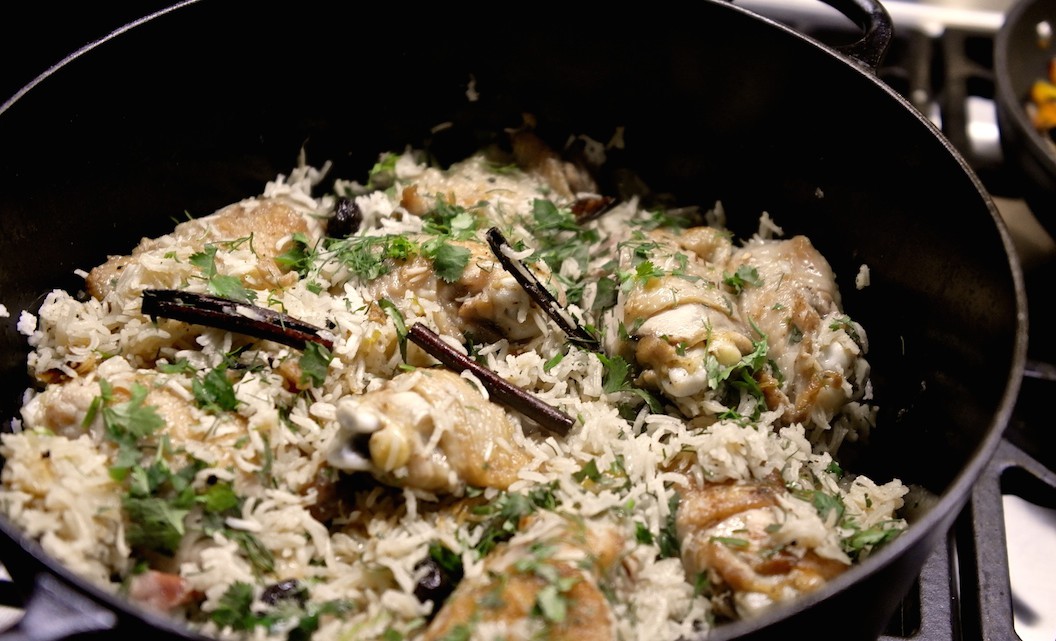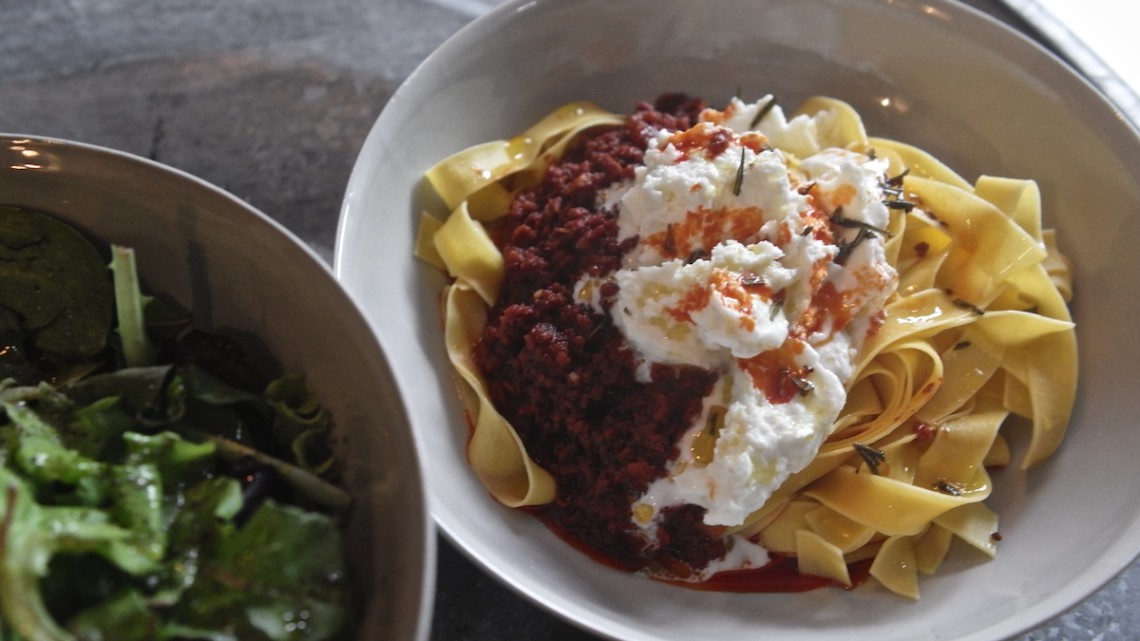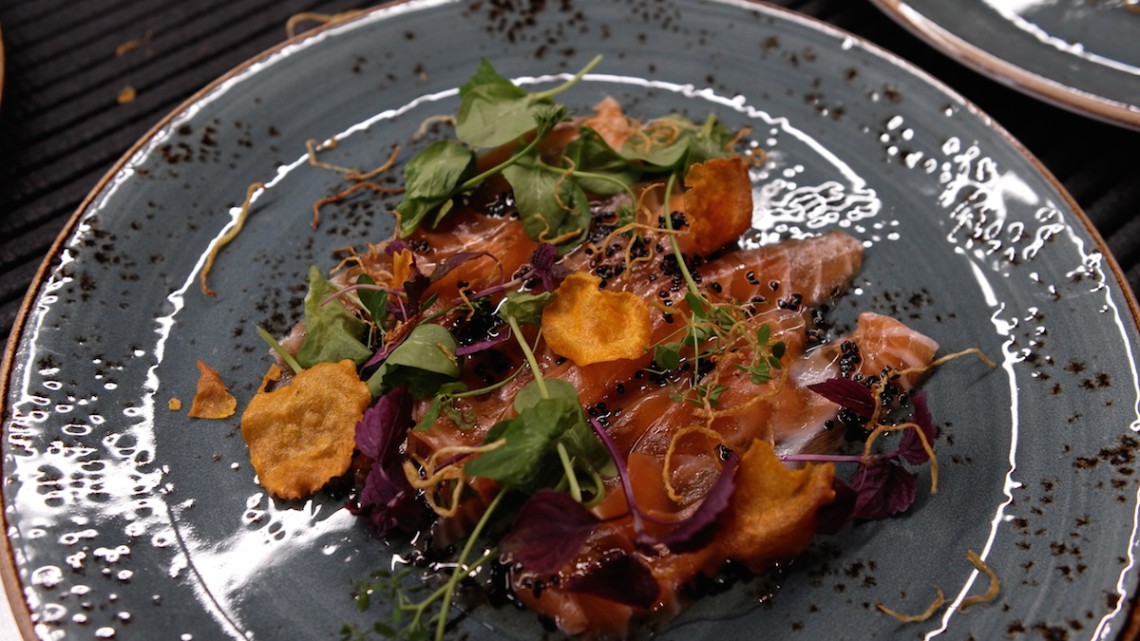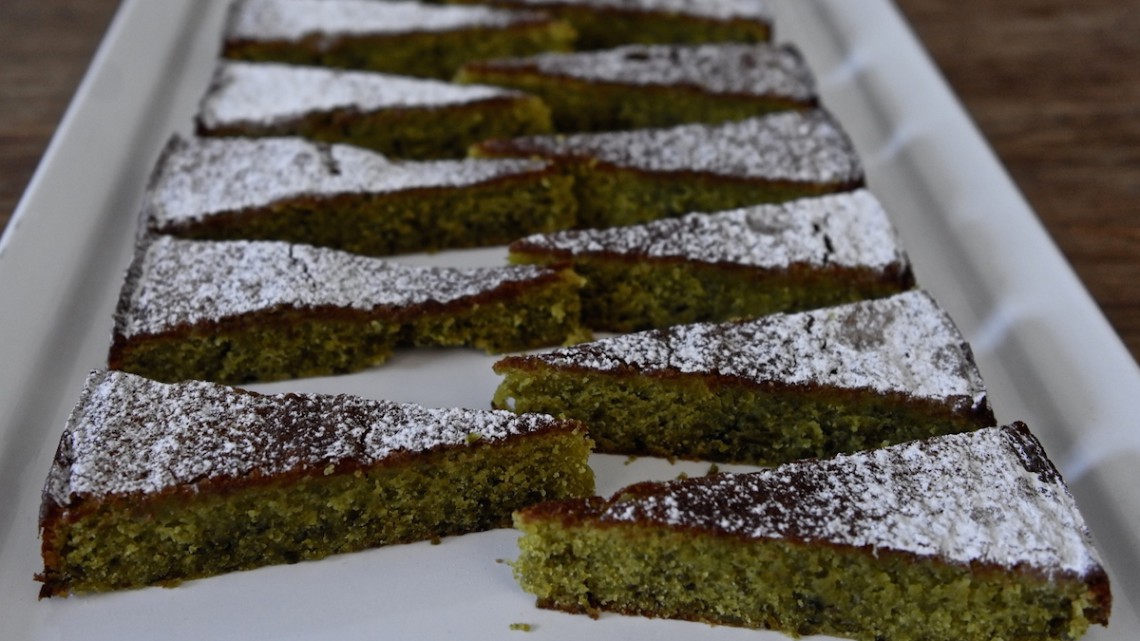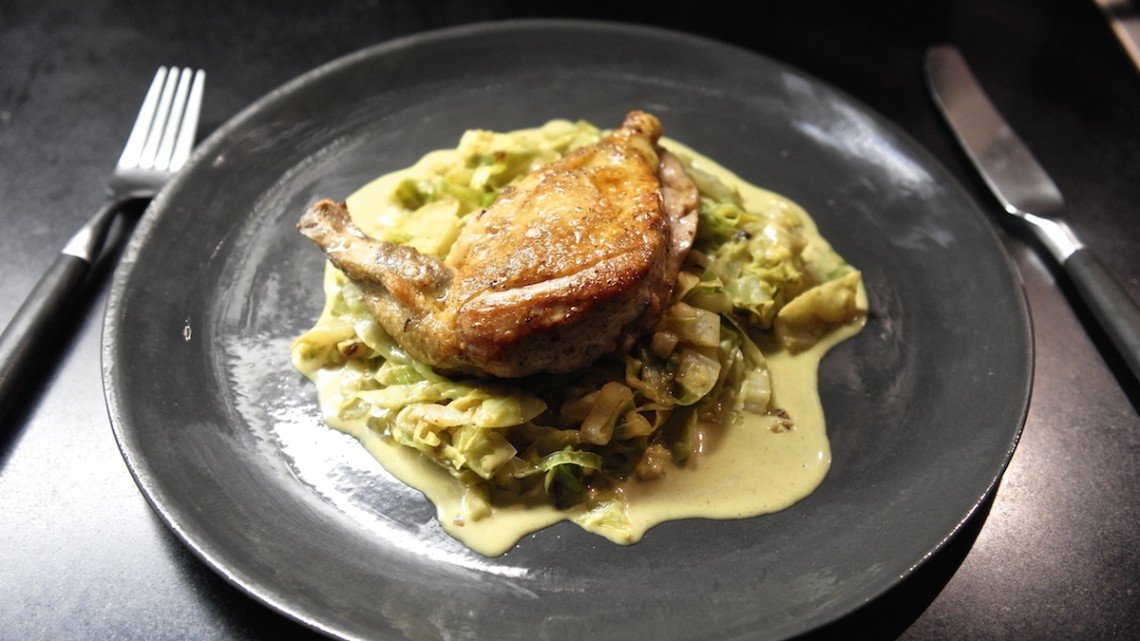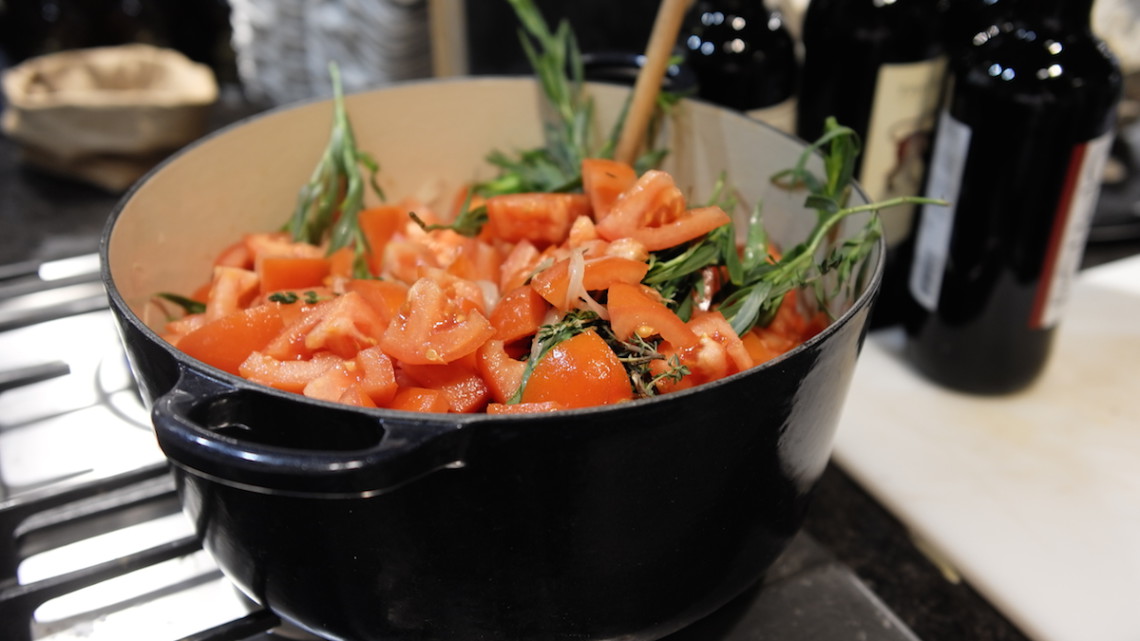Caramelized Onion and Cardamom Chicken with Rice
This recipe is inspired by one of favourite authors and chefs, Yotam Ottolenghi.
Serves 4
Ingredients
2 onions, thinly sliced
6 Tablespoons olive oil
8 chicken thighs, bone in and skin on
salt and pepper
10 cardamom pods
1/4 teaspoon cloves
2 cinnamon sticks
300 g basmati rice
600 ml boiling water
small bunch flat leaf parsley, chopped
small bunch dill, chopped
small bunch coriander leaves, chopped
50 g raisins
100 g Greek yoghurt seasoned with 2 Tablespoons olive oil, salt and pepper, to serve
Method
Heat a (Le Creuset) casserole pan over medium heat with 2 Tablespoons olive oil and sauté the onion for 10-15 minutes, stirring occasionally until the onion has caramelised and turned a deep golden brown. Transfer the onion to a small bowl and wipe the pan clean.
Meanwhile, place the chicken thighs in a bowl with a good seasoning of salt and pepper. Add 2 Tablespoons olive oil, cardamom, cloves and cinnamon. Mix everything well together. Heat the casserole pan with the remaining 2 Tablespoons olive oil and brown the chicken (with the spices) for 5 minutes on each side until a lovely golden colour. Remove the chicken from the pan, leaving the oil and the loose spices in the pan. Add the rice and toast off for 1-2 minutes. Add the caramelised onions, salt and pepper to taste and the raisins. Stir well and then add the chicken thighs, pushing them well into the rice.
Pour over the boiling water, cover the pan and cook over a very low heat for about 30 minutes until the chicken is cooked through. Take the pan off the heat, cover with a clean tea towel, replace the lid and allow to to steam for 10 minutes. Scatter the herbs over the disk and loosen the rice with a fork. Taste if more salt and pepper is needed. Serve with the yoghurt.
We, the Amsterdam Flavours chefs, hope you enjoy this recipe as much as we do. If you have any questions on how to prepare it or just want to send us your feedback, you can reach us here Contact Amsterdam Flavours
Pappardelle with Chorizo Ragu
One of our favourite cookery writers and stylists, Donna Hay, has inspired this recipe.
Serves 4
Ingredients
400 gr dried chorizo
1 tablespoon extra virgin olive oil
2 sprigs rosemary
1 red chilli
2 cloves garlic
salt and pepper
good glug of red wine (about 100 ml)
1 x 400 g can peeled tomatoes
2 tablespoons brown sugar
400 g pappradelle
250 g buffalo mozzarella
green salad, to serve
Method
Remove the cases from the chorizo and roughly chop. Place into a Magimix (foodprocessor) and process until finely chopped, resembling minced meat. Set aside.
Bring a pan of salted water to the boil for the pasta. Finely chop the garlic, deseed the chilli and finely chop half of it (or more depending on how spicy you like it). Heat the olive oil in a large frying pan over medium-high heat. Strip trip the leaves from the rosemary stalks and chop them roughly. Add the rosemary to the pan and cook for 30 seconds until crisp. Remove and set aside. Add the chorizo, garlic, chilli, salt and pepper to the pan and cook for 3-4 minutes until golden and crispy, stirring often.
Add the wine and cooked cook for 30 seconds to 1 minute. Add the tomatoes and brown sugar and bring to a simmer. Turn the heat to low and cook for 5-7 minutes. ( If you find that too much oil has come from the chorizo, you can also spoon a little off). While the chorizo is cooking, cook the pasta in the boiling water according to the package instructions. Drain and reserve 100 ml of the cooking liquid.
Add a little of the reserved cooking liquid to the chorizo mixture to start with, making sure ragu has a nice consistency. Divide the pasta between 4 bowls. Top with the chorizo ragu and tear the mozzarella over. Sprinkle over the crispy rosemary, drizzle with some of the chorizo oil in the pan and serve with a green salad simply dressed with olive oil.
All Butter Croissants
There is nothing better than warm, butter, flakey croissants straight from the oven. Making them yourself takes a little practice, but the results are SO worth it. Serve with farmhouse butter, good jam and a cup of coffee. Heaven!
Ingredients
625g strong white flour, plus extra for rolling out
12 g salt
75 g sugar
40 g fresh yeast
500g butter, chilled
1 egg, beaten
Method
The day before you want to bake the croissants, place the flour, sugar, salt and yeast in the bowl of a mixer fitted with a dough hook, or a large mixing bowl. Pour in 350-400ml cold water and mix until it comes together as a soft dough.
Turn out the dough onto a lightly floured work surface and knead for a good 8-10 minutes, or until the dough feels smooth, stretchy and elastic. Return to the bowl and set aside to rest.
Sandwich the chilled butter between two sheets of greaseproof paper and roll out to a 30x20cm rectangle, about 1cm thick. Chill in the fridge until needed.
Turn the dough out again onto a lightly floured work surface. Roll it into a rectangle 60x30cm. Peel the greaseproof paper from the butter and place the butter centrally on top of the pastry rectangle. Fold one edge of the pastry over the butter to half-cover it, then do the same with the other edge of the pastry so that the butter is covered. Fold the rectangle in half lengthways, then give it a quarter-turn and roll out again to a rectangle measuring 60x30cm.
Repeat the folding, turning and rolling process, as before, three more times (do not roll out the pastry the final time you fold and turn it). Wrap the pastry in cling film and chill in the fridge overnight.
When the pastry has rested, roll it out to a thickness of 0.5cm. Cut the pastry into two 50x20cm strips, then cut each strip into triangles about 10cm wide at the base.
With the narrow point of one of the pastry triangles facing away from you, use your fingertips to stretch the two points of the triangle nearest to you out sideways so that they bow a little. Roll the pastry over itself, curling it into a traditional crescent shape, so that the furthest point of the triangle ends up curled over the top of the croissant. Repeat the process with the remaining pastry triangles to create about 20 croissants.
Place the croissants onto baking trays lined with silicone paper or baking parchment. Brush them all over with the beaten egg, then set aside to prove for 30-45 minutes. (The croissants can be frozen at this point, if desired.)
Preheat the oven to 190C/170C Fan. Bake the croissants for 20-25 minutes, or until risen and golden-brown. Serve warm with jam and butter.
We, the Amsterdam Flavours chefs, hope you enjoy this recipe as much as we do. If you have any questions on how to prepare it or just want to send us your feedback, you can reach us here Contact Amsterdam Flavours
Partners Dinner
Amsterdam Flavours would not be what or where it is today without the support of our esteemed partners. ArcLinea, Smeg, Wusthof, Le Creuset, Magimix, Baden Baden Interior, Sonos, Leica and Quooker have teamed up with us to create an all-round culinary experience. And it shows at what we have managed to a put together at our new home at the Westergasfabriek.
As a thank you for their ongoing support, we hosted a dinner in their honour last week. A small way we can show our appreciation and how much they mean to us. It was a lovely informal evening with good food, good wine and good conversation. We have decided to make this a yearly event - isn't that what family's do?
A special thank you must go out to Cichi Dining Experience for the beautiful table settings.
A Look Back at Opening Week and Rens Kroes' Book Launch
Wowzers!! What a week we've just had. Last Wednesday 10th June was an historic day for Amsterdam Flavours. It was our first official day open and a race against the clock to get our new place at the Westergasfabriek ready on time. The long days, moments of stress and worry have paid off and we now have a magnificent space to show for it.
We opened straight away with the book launch and pop-up restaurant for Rens Kroes. We cooked and served a menu comprising recipes from her new book Powerfood 2 - van Friesland naar New York. We met the most amazing people in the last few days and the buzz and hype around our new place was phenomenal. We still need to come down to earth!
Here's a look back in pictures of everything that's happened over the past week. And what does the future hold we hear you ask? Many more exciting things!
P.S. please all feel free to visit us at our new place at the Westergasfabriek in Amsterdam.
Pistachio-Olive Oil Cake
A delicious and unusual cake with a flavour of the middle east. The cake gets it's beautiful green colour from the pistachios and the olive oil keeps it moist. It's quite a rich cake, so a small piece will suffice. We usually serve it as part of a dessert with a parfait or some marinated pineapple. Yum!
Serves 8-10
Ingredients
50 g fine polenta
200 g ground pistachio nuts
50 g flour
1 teaspoon baking powder
125 ml olive oil
100 g unsalted butter, melted and cooled
3 eggs
200 g caster sugar
juice and grated zest of 1 lemon
juice of 1 orange
icing sugar for dusting
Method
Preheat the oven to 160 C. Mix the polenta, ground pistachios, flour and baking powder together.
Add the olive oil to the melted butter. Whisk the eggs and caster sugar until pale and fluffy, then slowly whisk in the olive oil and butter. Whisk in the pistachio mixture, then add the lemon juice and zest and orange juice.
Pour into a greased and lined 24 cm springform tin and bake for about 40 minutes. The cake should be slightly underdone in the middle, so that if you insert a skewer it will come out with a little of the mixture sticking to it. While cooling down, the cake will finish off cooking through. Leave to cool for 10 minutes before removing from the tin.
Once completely cooled, cut into slices and dust with icing sugar.
We, the Amsterdam Flavours chefs, hope you enjoy this recipe as much as we do. If you have any questions on how to prepare it or just want to send us your feedback, you can reach us here Contact Amsterdam Flavours
Lemon Polenta Cake
We've decided to divulge the secret and publish the recipe of a cake that has become quite famous. It's sharp and tangy and it's gluten-free too!
Serves 10-12
Ingredients
400 g soft unsalted butter (plus extra for greasing)
400 g caster sugar
400 g ground almonds
200 g fine polenta
16 g baking powder
6 large eggs, beaten
zest of 5 lemons (save juice for the syrup)
for the syrup
juice of 5 lemons
250 g icing sugar
Method
Line the base of a 26cm springform tin with baking paper and grease the sides with butter.
Preheat the oven to 150°C
Beat the butter and sugar till pale and whipped, in a Magimix Patissier or freestanding mixer.
Mix together the almonds, polenta and baking powder and salt. With the machine running, add the eggs to the butter, a little at a time.
Add the almond and polenta mixture and blend the mixture well. Finally, beat in the lemon zest. Spoon the mixture into the prepared tin and bake in the oven for about 60-70 minutes.
It may be slightly wobbly, but if the cake is cooked, a cake tester should come out cleanish and, most significantly, the edges of the cake will have started to shrink away from the sides of the tin. Remove from the oven to a wire cooling rack, but leave in the tin.
Make the syrup by boiling together the lemon juice and icing sugar in a small saucepan. Once the icing sugar’s dissolved into the juice, it's done.
Prick the top of the cake gently all over with a cake tester (or toothpick), pour the warm syrup over the cake, and leave to cool before taking it out of the tin. Serve in slices with whipped cream or creme fraiche.
We, the Amsterdam Flavours chefs, hope you enjoy this recipe as much as we do. If you have any questions on how to prepare it or just want to send us your feedback, you can reach us here Contact Amsterdam Flavours
Making Stock
Stocks or bouillons are the foundation of many important kitchen preparations; therefore the greatest possible care should be taken in their production.
Stock is not an end in itself – it is always used to make some other dish or as a basis for sauces. A stock is the liquid obtained from long, gentle simmering of bones, vegetables, seasonings and water (except fish stock which only requires 20 minutes). The liquid, strained and reduced down to concentrate its flavour by rapid boiling, is the basis of soups, stews, braises and sauces.
In cooking stock, the prime essential is patience. Classic cookbooks recommend cooking veal stock for 10-12 hours. Three hours will suffice for chicken stock and fish stock is completed relatively quickly in half an hour.
During the cooking process, all the flavour should have been extracted from the bones and vegetables, leaving them tasteless. As well as flavour, good stock should acquire body from bone marrow and when chilled it will set to a jelly.
LE FONDS – THE STOCKS
Stocks, which are clear, flavoured liquids, are the foundation of many kitchen preparations. Therefore the greatest possible care should be taken with them.
- Unsound meat or bones and decaying vegetables should not be used
- Scum should be removed continuously so that it does not boil back into the stock
- The pot should be skimmed regularly and only simmer gently
- Do not add turnip, potato or other items that will cloud stock
- Always keep the inside of the pot clean and free of grease and scum
- Keep stock in clean containers in the refrigerator or freezer to avoid souring
GENERAL PROPORTIONS OF INGREDIENTS FOR ALL STOCKS EXCEPT FISH
5 liters water
2 kg raw bones
500g vegetables (onion, carrot, celery leek)
Bouquet garni including thyme, bay leaf, parsley stalks
GENERAL METHOD FOR ALL BROWN STOCKS
Chop the bones, remove any skin or fat and brown well on all sides by placing in a roasting pan in the oven.
Drain off any fat and place the bones in a stockpot.
Brown any sediment that may be in the bottom of the tray, déglace (swill out) with boiling water, simmer for a few minutes and add to the bones.
Wash, peel and roughly cut the vegetables. Fry in a little fat (from the roasting tray) until well browned but not burnt. This will improve the colour of the stock. Add to the bones.
Add the cold water. Bring to the boil and skim. Then add the bouquet garni.
Simmer for 6-8 hours wiping the inside of the pot continually to remove impurities. Skim and strain.
NOTE: For brown stocks, a few tomatoes and washed mushroom trimmings may also be added to improve flavour.
BROWN VEAL STOCK
For brown veal stock, use the same ingredients as for the chicken stock, substituting veal bones for the chicken. Place 2-2,5kg veal bones in a roasting pan and roast in the oven for 30-40 minutes until well browned, stirring occasionally. Add the vegetables and brown them also, about 15-20 minutes longer. Thorough browning gives stock flavour and colour. Transfer the vegetables and bones to the stockpot. Discard the fat from the pan and deglaze with 500ml water. Add the liquid to the pot, then make the stock. Add the garlic, 1 chopped tomato or 1 tablespoon tomato puree, bouquet garni and peppercorns. Simmer for 6-8 hours.
We, the Amsterdam Flavours chefs, hope you enjoy this recipe as much as we do. If you have any questions on how to prepare it or just want to send us your feedback, you can reach us here Contact Amsterdam Flavours
Guinea Fowl With Curried Cabbage
Guinea fowl is a more posh version of chicken. It's quick to prepare and healthy. Try this great spring recipe for a mid-week meal.
Serves 4
Ingredients
4 guinea fowl breasts
olive oil
20 g butter
salt and pepper
Curried Cabbage
2 small hispe cabbages, finely sliced
2 shallots, finely sliced
20 g butter
1 tablespoon mild curry powder
50 ml Noilly Prat
100 ml cream
salt and pepper
Method
Preheat the oven to 180 C. Heat a frying pan over medium high heat with 2 tablespoons olive oil and the butter. Season the guinea fowl breasts with salt and pepper. Fry the guinea fowl, skin side down, for 2-3 minutes until the skin is golden and crispy. Turn over and fry for a further 1-1 1/2 minutes on the flesh side. Transfer to a roasting dish, pour over all the juices from the pan and roast for about 12 minutes in the preheated oven.
In the meantime and using the same frying pan, add another 20 grams butter to the pan and ffry the shallots for 3 minutes. Add the cabbage and fry for 3 minutes. Add the curry powder and fry for 1 minute to cook the spices out.
Add the Noilly Prat and cook until almost all the liquid has evaporated. Add the cream, bring to the boil and simmer over a medium to low heat until the cream has thickened slightly. Season with salt and pepper.
Take the guinea fowl out of the oven and rest for 5 minutes.
Divide the cabbage between 4 plates. Lay a guinea fowl breast on top of each, spoon over the juices and serve.
We, the Amsterdam Flavours chefs, hope you enjoy this recipe as much as we do. If you have any questions on how to prepare it or just want to send us your feedback, you can reach us here Contact Amsterdam Flavours
Tomato Shallot Sauce
This is a super delicious sauce to serve with roasted beef. We usually serve it with a roasted Simmenthaler beef fillet. It requires a little care and time to make, but the results are so worth it.
Serves 6
Ingredients
6 shallots, chopped
1 clove garlic, chopped
35 g unsalted butter
8 ripe tomatoes, deseeded and roughly chopped
sprig of tarragon
sprig of thyme
1 bay leaf
250 ml red wine
200 ml dry Madeira
100 ml Port
300 ml veal or chicken stock
salt and freshly ground black pepper
Method
Gently cook the shallots and garlic in 20g of the butter until very soft. Purée in a blender and place in a clean pan with the tomatoes, tarragon, thyme and bay leaf. Cook gently for five minutes or until the tomatoes start to break down.
Add the red wine, bring to the boil and cook until the liquid is reduced by half. Pour in the Madeira and Port, boil and reduce again by half. Add the stock and bring to the boil. Skim and simmer for 30 minutes.
Pass the sauce through a fine sieve and pour into a clean pan, bring to the boil and cook for about two minutes or until the desired consistency is achieved. Whisk in the remaining butter and season with salt and freshly ground black pepper and keep warm until ready to use.
We, the Amsterdam Flavours chefs, hope you enjoy this recipe as much as we do. If you have any questions on how to prepare it or just want to send us your feedback, you can reach us here Contact Amsterdam Flavours

